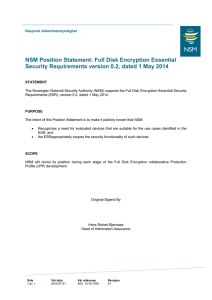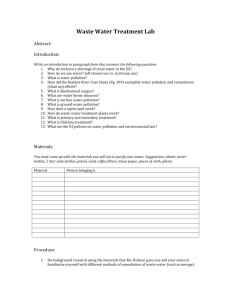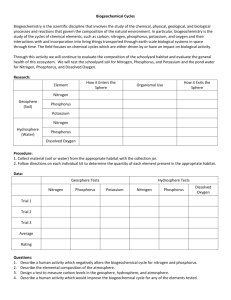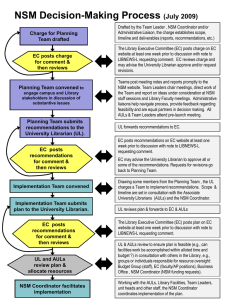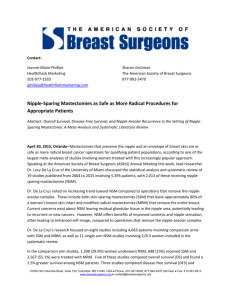Development of a Set of Nutrient Simulation Sub
advertisement
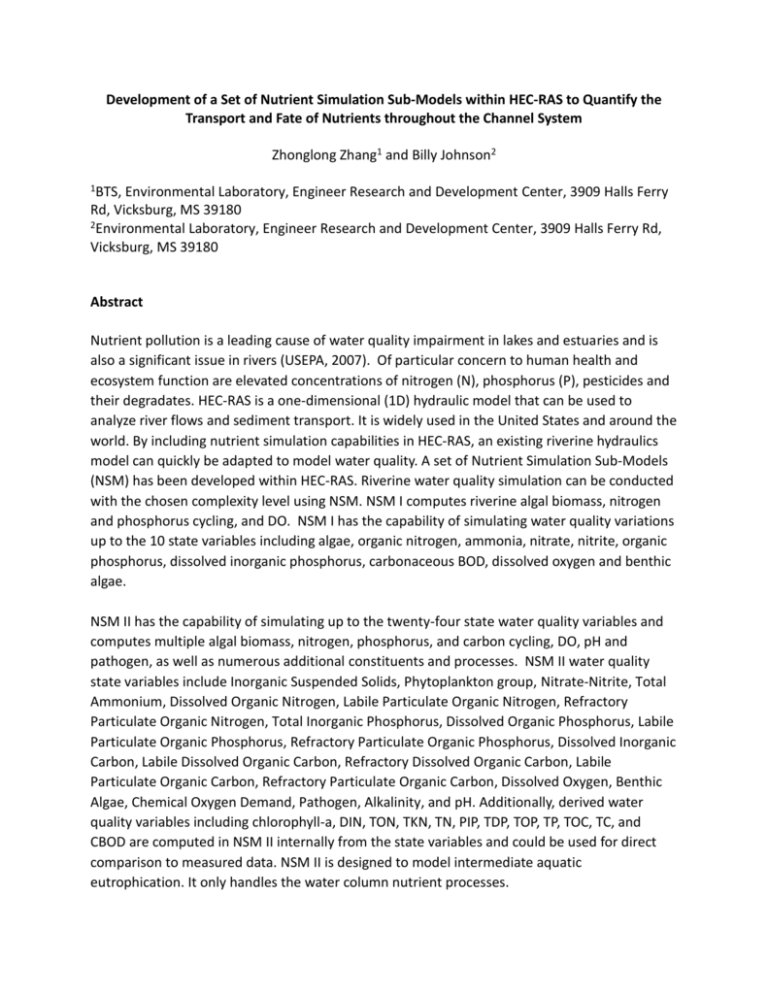
Development of a Set of Nutrient Simulation Sub-Models within HEC-RAS to Quantify the Transport and Fate of Nutrients throughout the Channel System Zhonglong Zhang1 and Billy Johnson2 1BTS, Environmental Laboratory, Engineer Research and Development Center, 3909 Halls Ferry Rd, Vicksburg, MS 39180 2Environmental Laboratory, Engineer Research and Development Center, 3909 Halls Ferry Rd, Vicksburg, MS 39180 Abstract Nutrient pollution is a leading cause of water quality impairment in lakes and estuaries and is also a significant issue in rivers (USEPA, 2007). Of particular concern to human health and ecosystem function are elevated concentrations of nitrogen (N), phosphorus (P), pesticides and their degradates. HEC-RAS is a one-dimensional (1D) hydraulic model that can be used to analyze river flows and sediment transport. It is widely used in the United States and around the world. By including nutrient simulation capabilities in HEC-RAS, an existing riverine hydraulics model can quickly be adapted to model water quality. A set of Nutrient Simulation Sub-Models (NSM) has been developed within HEC-RAS. Riverine water quality simulation can be conducted with the chosen complexity level using NSM. NSM I computes riverine algal biomass, nitrogen and phosphorus cycling, and DO. NSM I has the capability of simulating water quality variations up to the 10 state variables including algae, organic nitrogen, ammonia, nitrate, nitrite, organic phosphorus, dissolved inorganic phosphorus, carbonaceous BOD, dissolved oxygen and benthic algae. NSM II has the capability of simulating up to the twenty-four state water quality variables and computes multiple algal biomass, nitrogen, phosphorus, and carbon cycling, DO, pH and pathogen, as well as numerous additional constituents and processes. NSM II water quality state variables include Inorganic Suspended Solids, Phytoplankton group, Nitrate-Nitrite, Total Ammonium, Dissolved Organic Nitrogen, Labile Particulate Organic Nitrogen, Refractory Particulate Organic Nitrogen, Total Inorganic Phosphorus, Dissolved Organic Phosphorus, Labile Particulate Organic Phosphorus, Refractory Particulate Organic Phosphorus, Dissolved Inorganic Carbon, Labile Dissolved Organic Carbon, Refractory Dissolved Organic Carbon, Labile Particulate Organic Carbon, Refractory Particulate Organic Carbon, Dissolved Oxygen, Benthic Algae, Chemical Oxygen Demand, Pathogen, Alkalinity, and pH. Additionally, derived water quality variables including chlorophyll-a, DIN, TON, TKN, TN, PIP, TDP, TOP, TP, TOC, TC, and CBOD are computed in NSM II internally from the state variables and could be used for direct comparison to measured data. NSM II is designed to model intermediate aquatic eutrophication. It only handles the water column nutrient processes. In addition to NSM II water column simulation, NSM III incorporates a dynamic bed sediment diagenesis component, which simulates the chemical and biological processes undergone at the sediment-water interface after sediment are deposited. All levels of NSM libraries are compiled as dependent dynamic libraries (DLLs) and then incorporated into the HEC-RAS model. The integrated system has been tested and validated using analytical solutions. The NSM algorithms and integration within HEC-RAS will be further tested and validated directly against field data and existing water quality models such as CEQUAL-W2. The incorporation of NSM water quality capabilities in HEC-RAS will provide public a fully integrated riverine hydraulic, sediment and water quality model that encompasses diagnostic, predictive, and operational applications and will greatly aid in Total Maximum Daily Load (TMDL) development and implementation required by the Clear Water Act.
